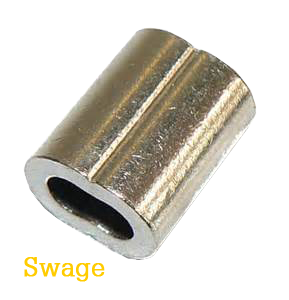 Last year I reran all of my kayak steering cables on the Big Rig for the Torqeedo. Instead of swaging the cable termination at the
Last year I reran all of my kayak steering cables on the Big Rig for the Torqeedo. Instead of swaging the cable termination at the  foot brace I used a 3/16″ wire rope clamp. The original clamps made it through the season, but galvanized steel had rusted and corroded in no time.
foot brace I used a 3/16″ wire rope clamp. The original clamps made it through the season, but galvanized steel had rusted and corroded in no time.
The reason for this upgrade was to grant the ability of leaving the steering cables fully adjustable and removable for maintenance. A wire rope clamp is a U-bolt with a saddle and 2 nuts. A wire rope clamp is used for clamping down on 2 strands of wire rope to securely form a loop. They range in all different sizes. For this application a 3/16″ clamp is best. To assemble, insert the end of wire rope into clip saddle loop back around and set the end inside the saddle under the U-Bolt and tighten nuts until secure.
Previously using cable swages which permanently crimp to the cable and are only removed by cutting off. This made any sort of maintenance impossible without cutting the cable. Previously I was able to remove the swages using a Dremel tool precisely not to cut into the wire rope. This took time and was not ideal.
The new clamps pictured are stainless steel and should last much longer in the saltwater environment. The steel rope clamps are pretty inexpensive at around $1.50 to $2.00 apiece but can be purchased in bulk cheaper.










